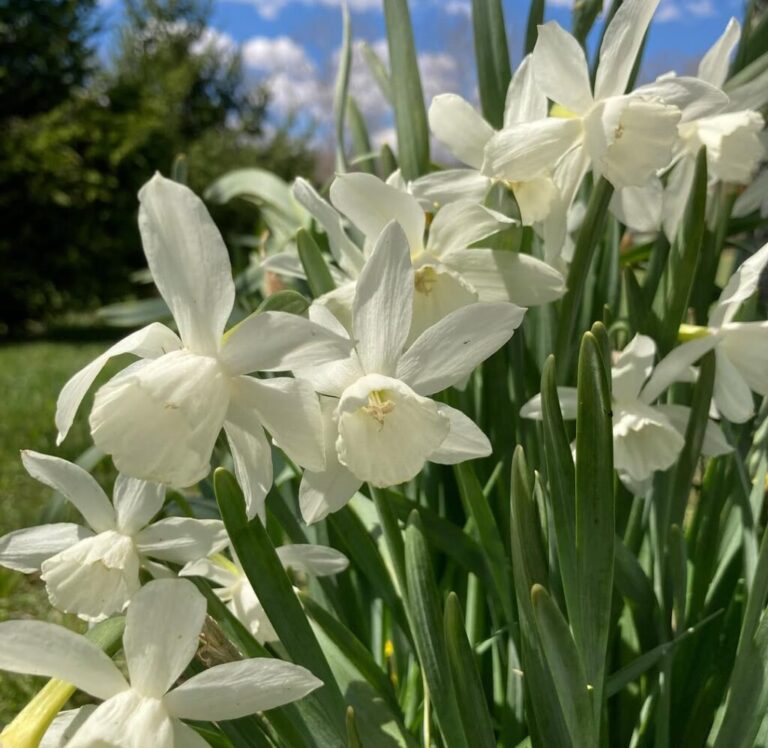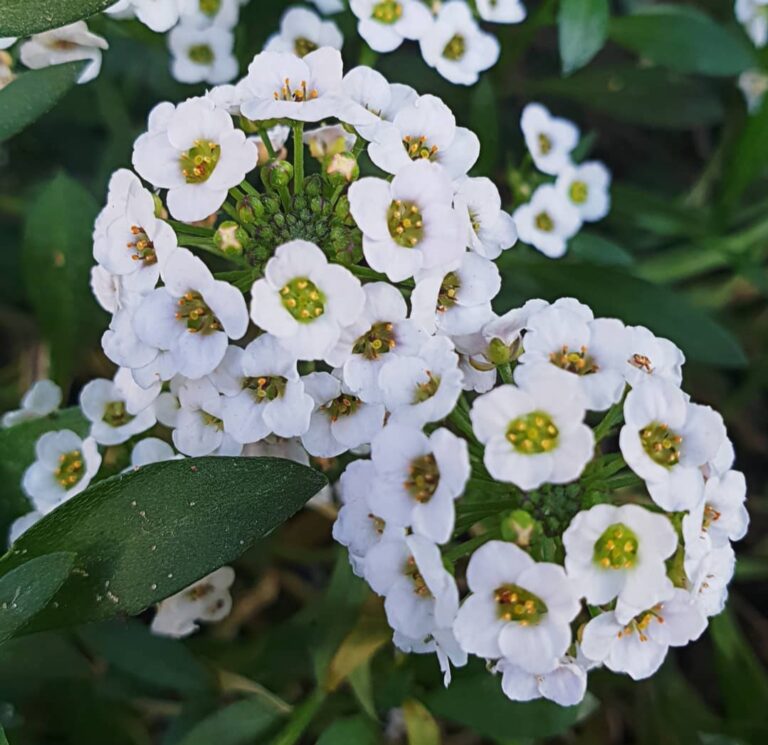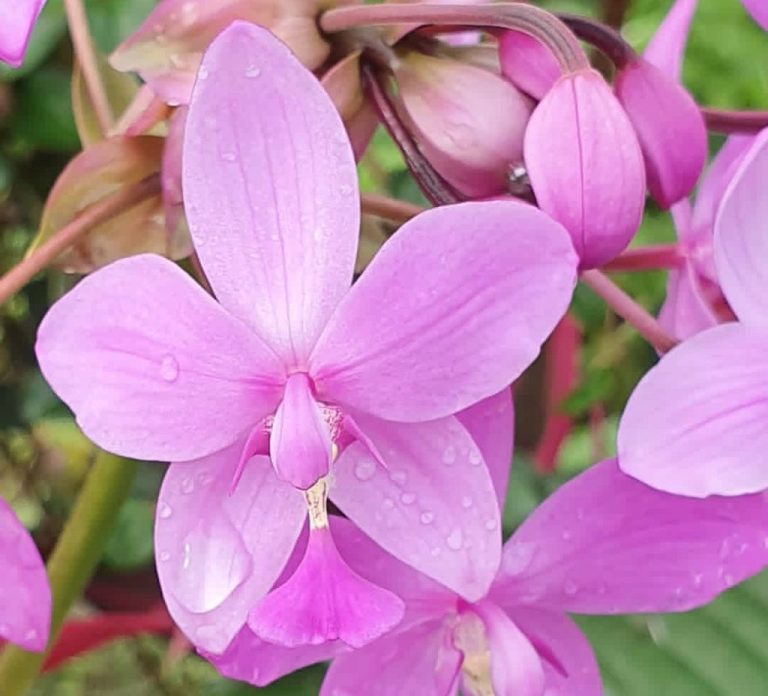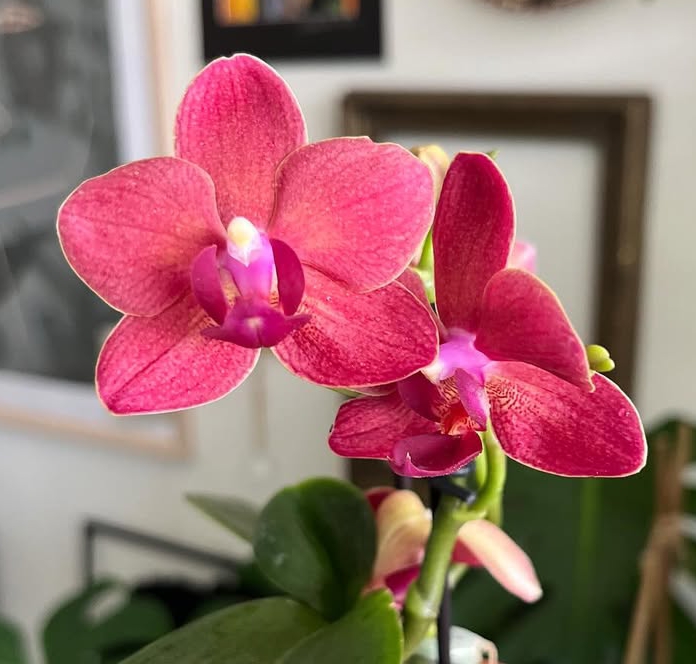The String of Hearts (Ceropegia woodii) is a captivating trailing plant known for its delicate, heart-shaped leaves and cascading vines. Whether you’re a beginner or a seasoned plant enthusiast, mastering its care will keep it lush and thriving for years. This resilient houseplant requires minimal maintenance, making it an excellent choice for those who love greenery without the hassle. Follow these 10 expert tips to grow a stunning String of Hearts plant that will flourish indoors.
String of Hearts (Ceropegia woodii):
| Feature | Details |
|---|---|
| Common Name | String of Hearts |
| Scientific Name | Ceropegia woodii |
| Plant Type | Succulent Vine |
| Light Needs | Bright, indirect light (4-6 hrs) |
| Watering | Every 7-10 days (less in winter) |
| Humidity | 40-50%, tolerates dry air |
| Temperature | 65-80°F (18-27°C) |
| Soil Type | Well-draining succulent mix |
| Fertilizing | Monthly (spring & summer) |
| Growth Rate | Fast-growing, trailing vines |
| Propagation | Stem cuttings in water/soil |
| Repotting | Every 2-3 years (if rootbound) |
| Toxicity | Non-toxic to pets & humans |
Tip: String of Hearts is an excellent choice for small spaces due to its trailing nature. Hang it in a decorative pot for a beautiful cascading effect.
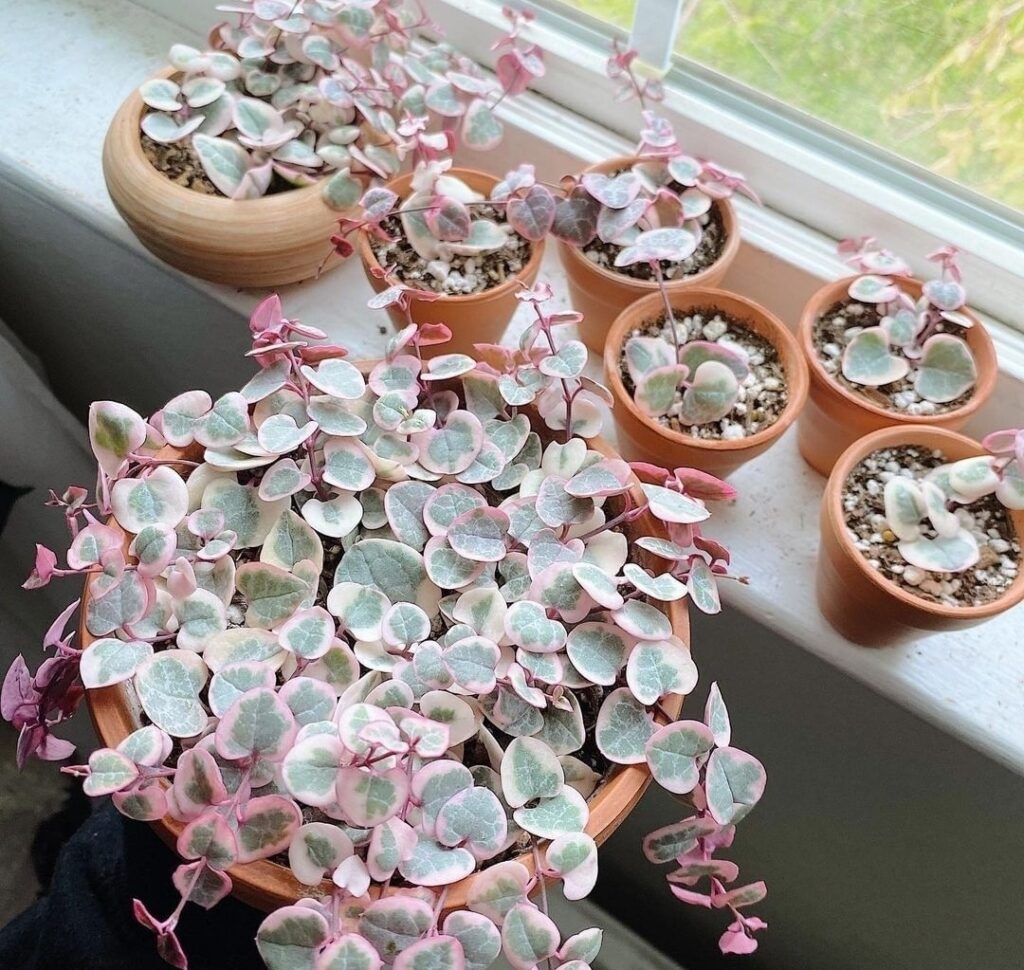
- 1 1. Provide Bright, Indirect Light
- 2 2. Use Well-Draining Soil
- 3 3. Water Sparingly
- 4 4. Maintain Warm Temperatures
- 5 5. Ensure Proper Humidity
- 6 6. Fertilize During the Growing Season
- 7 7. Prune for Fuller Growth
- 8 8. Repot When Necessary
- 9 9. Watch for Pests and Diseases
- 10 10. Propagate Easily
- 11 FAQs on String of Hearts
1. Provide Bright, Indirect Light
String of Hearts thrives in bright, indirect sunlight, which helps maintain its vibrant colors and compact growth. Position your plant near a south- or west-facing window with sheer curtains to filter intense rays. If grown under low light conditions, its vines may stretch excessively, leading to leggy and weak growth. Providing the right amount of light ensures that the leaves remain plump and the trailing vines stay full and healthy.
Tip: If natural light is limited, use a grow light to supplement and maintain healthy foliage, especially during the darker winter months.
2. Use Well-Draining Soil
A light, airy soil mix is essential for preventing root rot and ensuring optimal root health. A blend of cactus mix, perlite, and orchid bark works best, allowing proper drainage and aeration. This combination prevents water from sitting at the roots, which could cause fungal infections or decay. Well-draining soil is key to maintaining the plant’s overall health and avoiding moisture-related issues.
Tip: Avoid using heavy potting soil that retains too much moisture, as this can lead to soggy roots and increase the risk of disease.
3. Water Sparingly
Being a semi-succulent, String of Hearts requires infrequent watering to thrive. Water only when the top 2-3 inches of soil are dry, as overwatering can cause root rot. It is more tolerant of dry conditions than excessive moisture. If the leaves start shriveling, it may be a sign that your plant needs water, but always check the soil first to avoid unnecessary watering.
Tip: Reduce watering frequency during winter when the plant enters dormancy, as it requires less moisture during this period.
4. Maintain Warm Temperatures
Keeping your plant in temperatures between 65-80°F (18-27°C) is ideal for its growth. String of Hearts does not tolerate frost or cold drafts, so avoid exposing it to temperatures below 50°F (10°C). Sudden temperature fluctuations can cause stress, leading to slowed growth or leaf drop. Ensuring a stable, warm environment will promote healthy vines and prevent damage.
Tip: If grown outdoors, bring your plant inside before temperatures drop too low, particularly in autumn.
5. Ensure Proper Humidity
While String of Hearts adapts to average household humidity, it prefers 40-60% humidity for optimal growth. If you live in a particularly dry climate, consider increasing humidity by using a humidity tray or placing a small humidifier nearby. Dry air can lead to crispy leaf edges and slower growth, so keeping an eye on humidity levels can help maintain lush foliage.
Tip: Avoid placing your plant near heating vents or air conditioners, as dry air can cause leaf curling and dehydration.
6. Fertilize During the Growing Season
Feed your plant with a balanced liquid fertilizer (diluted to half-strength) once a month during spring and summer. This encourages steady growth and vibrant foliage. However, avoid over-fertilization, as this can lead to excessive vine length at the expense of leaf variegation and health. A well-fed String of Hearts will produce more compact and full-looking vines.
Tip: Skip fertilization in fall and winter when the plant’s growth naturally slows down.
7. Prune for Fuller Growth
Regularly trim long, leggy vines to encourage bushier growth and maintain an attractive shape. Use sterilized scissors to cut just above a leaf node, as this stimulates new growth from that point. Pruning also helps control the plant’s overall size and promotes a fuller appearance by preventing vines from becoming too sparse.
Tip: Use the trimmed cuttings for propagation to grow more plants or fill out your existing pot.
8. Repot When Necessary
Repot your String of Hearts every 2-3 years or when roots start circling the bottom of the pot. Choose a container that is one size larger and has drainage holes to prevent excess moisture retention. Repotting gives the plant fresh nutrients and more space to expand, keeping it healthy and thriving.
Tip: The best time to repot is during spring when the plant enters its active growth phase, allowing it to recover quickly.
String of Hearts all season care
| Care Task | Spring & Summer (Growing Season) | Fall & Winter (Dormant Season) |
|---|---|---|
| Watering | Every 7-10 days (allow soil to dry) | Every 2-3 weeks (reduce watering) |
| Light | Bright, indirect sunlight (4-6 hrs) | Bright, indirect light (south/west window) |
| Temperature | 65-80°F (18-27°C) | 60-70°F (16-21°C), avoid cold drafts |
| Humidity | 40-50%, can tolerate lower | Maintain normal indoor levels |
| Fertilizing | Monthly with diluted liquid fertilizer | Stop fertilizing |
| Repotting | Every 2-3 years, only if rootbound | Not recommended |
| Pruning | Trim leggy vines to encourage growth | Minimal pruning |
| Propagation | Stem cuttings in water/soil | Possible, but slower growth |
| Pests Check | Inspect regularly for pests like aphids | Inspect occasionally |
| Dormancy Care | Normal care, watch for fast growth | Keep slightly drier, avoid overwatering |
9. Watch for Pests and Diseases
Common pests that affect String of Hearts include aphids, spider mites, and mealybugs. These pests can cause yellowing, wilting, or leaf drop if left untreated. Regularly inspect your plant and remove any visible pests using neem oil or insecticidal soap. Preventative care is key to keeping your plant pest-free.
Tip: Yellowing leaves often indicate overwatering, while faded variegation suggests insufficient light exposure.
10. Propagate Easily
String of Hearts is one of the easiest plants to propagate via stem cuttings, tubers, or water propagation. Simply place a vine cutting with nodes in water or moist soil, and within a few weeks, roots will begin to develop. Propagating your plant not only helps expand your collection but also ensures a fuller, more attractive pot over time.
Tip: Propagation is a fun and rewarding way to create new plants for yourself or to gift to friends and family.
With the right care, your String of Hearts will flourish, rewarding you with trailing vines full of charming heart-shaped leaves. This low-maintenance plant brings beauty and greenery into any home while requiring minimal effort. By following these expert tips, you’ll enjoy a stunning, thriving plant that enhances your living space for years to come.
FAQs on String of Hearts
What is a String of Hearts plant?
The String of Hearts (Ceropegia woodii) is a stunning trailing succulent with delicate, heart-shaped leaves that cascade beautifully from hanging pots or shelves. Often called the rosary vine, this plant is highly sought after due to its unique appearance and low maintenance requirements. The String of Hearts thrives in bright, indirect sunlight and needs well-draining soil to prevent root rot. Its vines can grow several feet long, making it an excellent choice for plant lovers looking to add a touch of greenery to their homes. With the right care, your String of Hearts can flourish for years, producing small, tubular flowers that add even more charm to its already striking appearance.
How often should I water my String of Hearts?
Watering the String of Hearts requires careful attention to prevent overwatering, which is the most common cause of plant failure. This drought-tolerant succulent prefers to dry out completely between waterings, so it is best to water it once every two weeks, depending on humidity and temperature. If the leaves of your String of Hearts start to appear wrinkled or soft, it is a sign that it needs water. However, if the leaves turn yellow and mushy, this indicates overwatering. Always check the soil before watering to ensure it is completely dry. Using a well-draining soil mix and a pot with drainage holes will help maintain the perfect moisture balance for your String of Hearts
ensuring it remains healthy and vibrant.
Does String of Hearts need direct sunlight?
The String of Hearts thrives in bright, indirect sunlight but can tolerate some direct morning light. Too much harsh sunlight, especially during peak afternoon hours, can cause its delicate leaves to scorch and lose their vibrant color. If grown indoors, place your String of Hearts near a bright window with filtered light to encourage lush, healthy growth. A south or east-facing window is ideal, as it provides the perfect balance of light without causing damage. If you notice your String of Hearts growing leggy with fewer leaves, it may be a sign that it isn’t receiving enough light. In this case, consider using a grow light to supplement natural sunlight, especially during the winter months when daylight hours are shorter.
What type of soil is best for String of Hearts?
Choosing the right soil is crucial for the String of Hearts to prevent water retention, which can lead to root rot. The best soil mix for the String of Hearts is a well-draining blend, such as cactus or succulent soil mixed with perlite or sand. This combination allows excess water to drain quickly, preventing the roots from sitting in moisture for too long. Avoid using regular potting soil alone, as it retains too much water and can suffocate the roots of your String of Hearts. Repotting your plant every couple of years with fresh soil helps maintain good aeration and nutrient availability, ensuring strong and healthy growth.
.
Why are the leaves on my String of Hearts turning yellow?
Yellow leaves on a String of Hearts can be a sign of overwatering, poor drainage, or even too much direct sunlight. If you water your plant too frequently, the roots may begin to rot, leading to yellow, mushy leaves. Ensure your String of Heartsis planted in a well-draining pot and that the soil is completely dry before each watering. Additionally, prolonged exposure to harsh direct sunlight can cause leaf discoloration. Move your String of Hearts to a bright but indirect light source to prevent further damage. If watering and light conditions are optimal, consider checking for nutrient deficiencies, as a lack of essential minerals can also cause yellowing.
Can String of Hearts be grown outdoors?
Yes, the String of Hearts can be grown outdoors, but it thrives best in warm climates with mild temperatures. It is suitable for USDA zones 10-12, where the temperature does not drop below 50°F (10°C). If you live in a cooler region, you can keep your String of Hearts outside during the warmer months but bring it indoors when temperatures begin to drop. When growing it outdoors, choose a shaded or partially sunny spot to protect it from extreme heat or frost. The String of Hearts does exceptionally well in hanging baskets, allowing its vines to cascade beautifully in a natural environment.
How fast does String of Hearts grow?
The String of Hearts is a relatively fast-growing plant, especially when given the right care conditions. Under ideal lighting, watering, and fertilization, the vines can grow several inches per month, reaching up to 6-10 feet over time. If you want to encourage faster growth, ensure your String of Hearts s receives plenty of bright, indirect light and occasional feeding with a diluted fertilizer. Trimming the plant occasionally can also promote bushier growth, making it look fuller and more vibrant.
Does String of Hearts need fertilizer?
Fertilizing your String of Hearts during the growing season can significantly enhance its growth and overall health. A balanced, diluted liquid fertilizer applied once a month in spring and summer provides the nutrients necessary for strong vines and lush foliage. However, avoid over-fertilizing, as excessive nutrients can cause root damage. During the winter months, when the String of Hearts enters dormancy, it is best to stop fertilizing to allow the plant to rest.
How do I make my String of Hearts fuller?
To make your String of Hearts fuller and more compact, regular pruning is essential. Cutting back long, leggy vines encourages branching and stimulates new growth. You can also wrap vines around the soil to promote rooting, creating a denser, more vibrant plant. Ensuring your String of Hearts receives proper light, watering, and occasional feeding will also help maintain its lush appearance

